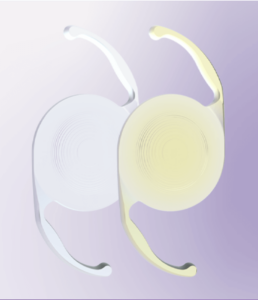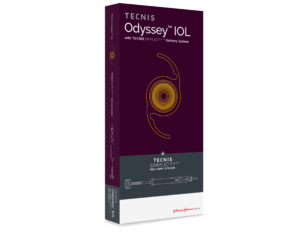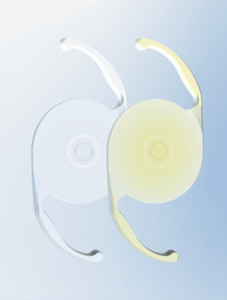Range of Vision Lenses
Patients interested in reducing their need for glasses after surgery may benefit from improvements in Intraocular lens technology. Dr. Lee was one of the earliest surgeons to use both the PanOptix and Odyssey trifocal IOLs and the Vivity extended depth of focus IOL. When you come in for a preoperative consultation, Dr. Lee will assess your candidacy for these special lenses and will customize your surgical plan accordingly.
Our eye is like a camera that must constantly shift its focus from far to near and various distances in-between. The best system is what a young person has, a human lens that can accommodate, constantly and automatically changing shape to adjust focus. This is like having an “auto-focus” camera where the focus is automatically and instantly adjusted. With age, all of use lose accommodation, ending up with a “manual focus” camera. At that point, we change the focus by switching between different pairs of eyeglasses for each distance that we need or by using bifocal, trifocal, or progressive (“no line bifocal”) eyeglasses.
With a single focus (monofocal) lens implant, you select the zone you’d want to see optimally without any eyeglasses on. This lens may be toric to correct astigmatism and make that zone sharper without glasses. You could decide to target distance (driving, TV), intermediate (computer), or near (cell phone, reading).
PanOptix Trifocal Lens
The Alcon PanOptix trifocal lens implant is the newest generation multifocal lens implant and provides focus across all the zones. This occurs naturally and automatically, without having to look through different parts of the artificial lens, unlike with wearing bifocal, trifocal, or progressive eyeglasses. The PanOptix is designed to be distance dominant, prioritizing having clear distance vision. Therefore, having good lighting is important to be able to read without eyeglasses. If the print is too small or the lighting is insufficient, you can always put on over-the-counter reading glasses to see better up close.
There may also be situations where very thin distance eyeglasses would boost your ability to see critical details in the far distance. For example, some patients have “glove compartment” eyeglasses for driving at night. The PanOptix trifocal implant produces faint halos around point sources of light at night, when your pupil dilates. Patients typically report that they notice but can tolerate the halos. These symptoms are rarely noticed during the daytime.
Odyssey Trifocal Lens
The Johnson & Johnson Vision Odyssey range of vision implant also provides focus across all zones. Depending on each patient’s eye anatomy, goals, and preferences, the PanOptix or Odyssey IOL may be a better fit.
Vivity Extended Depth of Focus Lens
Extended depth of focus lens implants fit between trifocal and monofocal lenses. They employ a different mechanism to create range of vision and do not have rings. For example, a photographer can photograph your face and have the background very blurred to create a portrait-like effect. Alternatively, the camera settings can be altered to have your face and the background simultaneously visible, which is referred to as greater “depth of focus.”
The Vivity lens uses sophisticated optics to create more depth of focus than a single focus lens implant. For example, if set for distance, the Vivity is generally good for outdoors, seeing across the room, and seeing the dashboard. Compared to a monofocal lens set for distance, patients with the Vivity lens have noticeably better mid-range vision at arm’s length. They may be able to do some things on a computer without glasses but should expect to use glasses for spreadsheets or reading.
The Vivity is flexible because it does not need to be set for distance. If you are willing to wear thin glasses for driving or reading subtitles, you can target intermediate vision to prioritize seeing a computer screen, most activities on a cell phone, and at least some print. If you have been successful with monovision, you can use the Vivity to get more range in both your distance and near eyes.
Because it uses different technology than trifocal IOLs to create range of vision, the Vivity IOL does not produce the same additional rings at night.



